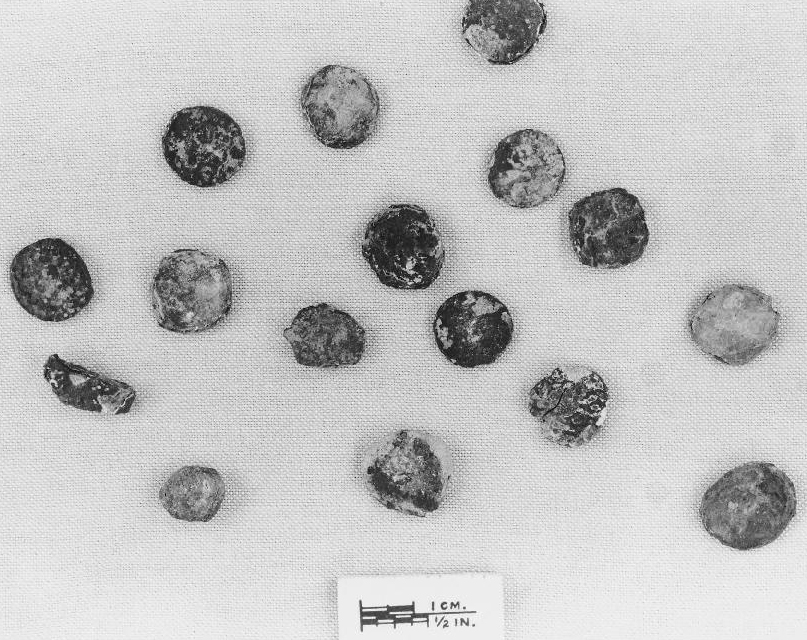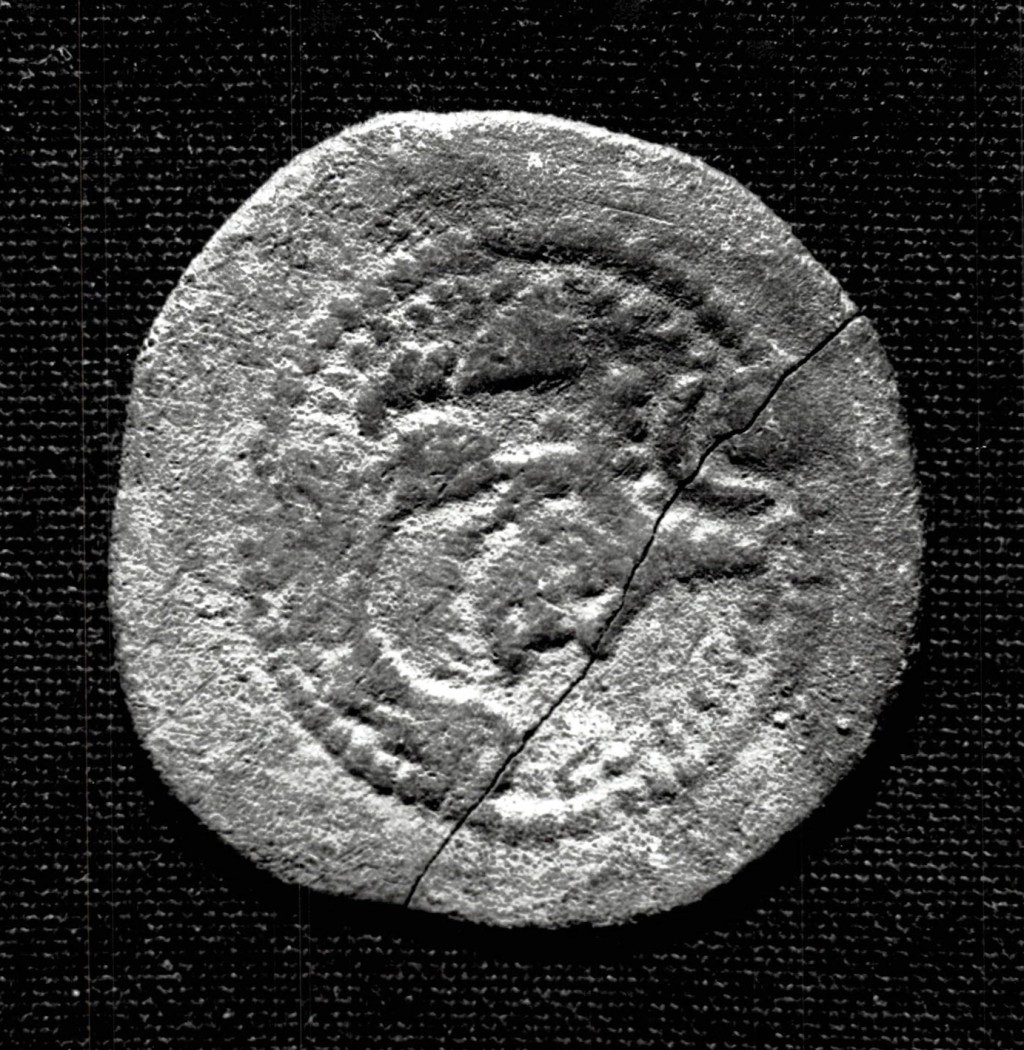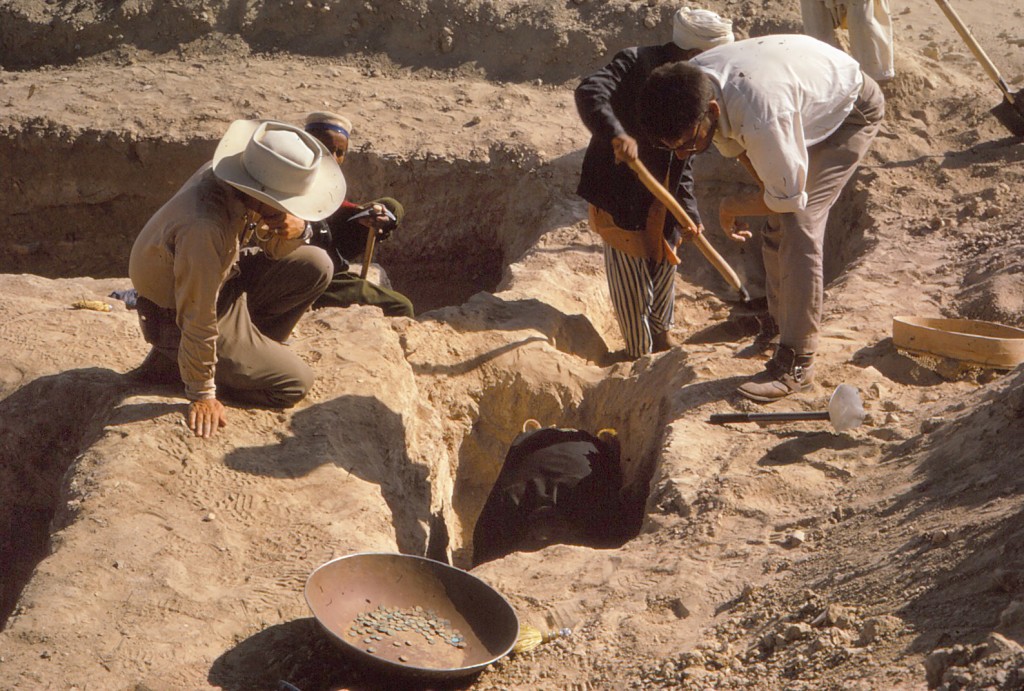Coins
Over 400 coins were found during the course of the project, almost all were discovered on the ground surface. They ranged in date from the 2nd to the 17th century CE. While a few silver coins were in the collection, the vast majority were small denomination bronze coins. The coins were first analyzed by Raymond Hebert at the Smithsonian and will be published in Volume 2 of our report by Arturo Annucci of Universite Orientale of Naples. Two groups of coins were of particular interest. During the excavation of the bazaar street bordering the mosque of Shahr-i Gholghola, numerous small hoards of coins were found sequestered in the walls bordering the street, all dating to the late 12th and early 13th centuries. The last date, 1222 CE, matches the known date of Genghiz Khan’s invasion of Sistan. A hoard of silver Sasanian coins were found in a spoil heap at the edge of a canal in Sar-o-Tar that helped us date neighboring Qala 359. Other coins purportedly from Sistan have been previously published by earlier archaeological expeditions but are almost always without a geographical context.





